Gibraltar's Secret Wars
Gibraltar's Secret Flotilla Missions to France and North Africa
During 1942 and 1943, hundreds of allied agents were landed in France and thousands of escapers and evaders were picked up off enemy beaches. These are the stories of those agents, many of whom were executed by the Germans. They are stories of incredible bravery, betrayal, initiative and cunning.
By Nick Nutter on 2024-03-24 | Last Updated 2025-05-19 | Gibraltar's Secret Wars
This article has been visited 3,048 times

Night Landings by Starlight
The Secret Flotilla based at Gibraltar
From April 1941 until 1943, a secret flotilla, operating out of Gibraltar, landed agents, and rescued returning agents, escapers, and evaders. The flotilla was a motley collection of fishing boats, sometimes called feluccas, a converted motor trawler, an ex-fishery protection vessel and a 'Q' ship. This is the story of the missions and the agents.
Do you enjoy my articles? For your reading pleasure, this website does not carry third party ads. You could help me write more articles by buying me a cup of coffee.
Operation Relator - 20th April 1941
The 'Q'ship, HMS Fidelity arrived at Gibraltar after a refit in the UK. On board were nineteen officers and seven signallers recruited for the Special Operations Executive who were to take part in Operation Relator. Operation Relator, which ran from 1941 to 1943, was the name given to the training of a party of area commanders to be used in Spain. They were also known as "Ali Baba and the 20 thieves". Their purpose was to delay the enemy in any advance into Spain.
25th April 1941
During April 1941, Fidelity, undertook a mission from Gibraltar to aid the escape of Polish personnel from southern France. The first operation occurred on April 25th, when it delivered two key figures: Egbert H. Rizzo, a Maltese civil engineer, and a former Polish Consul in Toulouse named Bitner, to Canet Plage. Their purpose was to establish escape routes for the British Secret Intelligence Service/Special Operations Executive (SIS/SOE) across the Pyrenees mountains into Spain.
The next night's operation, aiming to evacuate Polish servicemen from Cerbere, proved unsuccessful. During this attempt, four crew members - Pat O'Leary, Fergusson, Rogers, and Forde - became separated from the vessel. While NCO Forde managed to evade capture, the remaining three were apprehended by French authorities. Claiming to be Canadian, they were sent to a prison camp in St Hippolyte du Fort. Fergusson escaped first, followed by Rogers with O'Leary's assistance. O'Leary's own escape, aided by Lieutenants Richard Parkinson and Winwick Hewit along with prison guard Maurice Dufour, came later in early June 1941.
August 1941
Krajewski's first Moroccan mission involved a 190-kilometer journey on the felucca Seawolf to Casablanca. His goal was to deliver agents and liberate 24 Polish servicemen imprisoned by the Vichy authorities.
On his fourth trip to Morocco, Krajewski found himself seeking refuge in the Spanish port of Tarifa. This time, he was captaining the fishing vessel Dogfish, carrying fifty passengers. To avoid suspicion, he claimed they were survivors of a torpedoed ship, the SS Kirken. The next day, Dogfish proceeded to Gibraltar with all passengers on board.
Krajewski's courageous efforts resulted in the successful rescue of 78 Polish compatriots from the Vichy concentration camp in Morocco.
Operation Autogiro - 19th September 1941
Fidelity again sailed from Gibraltar and landed four SOE agents at Barcar's on the night of the 19th/20th September 1941.
This was Fidelity's last operation with SOE at Gibraltar. She returned to England where she was refitted for work in the Far East.
Operation Jasmine - 14 April 1942
On her first voyage out of Gibraltar, Lieutenant Marian Krajewski commanded the vessel Seawolf on a joint mission for Polish, British Special Operations Executive (SOE), and Political Warfare Executive (PWE) forces.
The night of April 18th bleeding into the 19th marked the start of the operation. Seawolf's task was to deliver Polish Captain Jankety Roehr to a secluded inlet, Port Miou, near Cassis, just southeast of Marseille. Roehr's objective was to reach Marseille and assemble a group of escaped and evading Polish servicemen. This contingent would be the first of its kind to be evacuated by sea from France.
An unexpected encounter unfolded as Seawolf departed Port Miou. Her path crossed with His Majesty's submarine P42, which was enroute to deliver SOE agents Victor Gerson (leader of the "Vic" escape line) and radio operator Marcel Clech to Miramar, south of Cannes, for Operation Delay II.
Operation Abloom - 18th April 1942
Under the cover of darkness, the converted motor trawler, HMS Tarana, delivered Pat O'Leary and his radio operator codenamed Drouet to a secluded beach near Port Vendres. The vessel's captain, Edward Clark, entrusted the mission to a small team: Sub Lieutenant Whiting and Seaman Stephens. Disguised as civilians and stripped of any identifying military insignia, they carried only the bare essentials - a small survival kit with rations and a last-resort cyanide capsule. Their instructions were clear: establish radio communications and maintain a low profile. If captured, a safe house awaited them at the Hotel du Tennis in Perpignan.
However, Drouet faltered at the last moment. The prospect of operating behind enemy lines proved too daunting. Disregarding orders, he sprinted back down the beach, demanding an immediate return. His panicked pleas were met with silence. The mission could not be jeopardized, and Drouet was left behind. This impulsive act later necessitated his replacement in June.
21st April 1942
On April 21st, 1942, the felucca Seawolf delivered three Special Operations Executive (SOE) agents to Antibes, France. Among them was Jean Menesson, an F Section agent leading the underground newspaper "Le Coq Enchaine." F Section comprised personnel recruited and trained by SOE to operate within resistance networks. The mission also included twenty-year-old Maurice Pertschuk, destined for Toulouse, and Henri P. Le Chene, bound for Lyons before establishing the Plane circuit in Clermont-Ferrand.
The following day, Seawolf returned to the French coast, this time to Port d'En-Vau, an inlet near Port Miou. Their objective was to evacuate 44 Poles gathered by Captain Roehr. After a successful mission, Seawolf set sail for Gibraltar, arriving safely on April 27th.
How the Agents Fared
Jean Menesson's mission in France was cut short in July 1943 when his secretary's arrest forced his escape back to England through Spain. In November that same year, he returned to France for a second operation, parachuted in during the night of November 15th/16th. Unfortunately, the mission organized by Henri Dericourt was compromised, and Menesson was among the four agents captured soon after landing. He was executed at Flossenburg concentration camp on March 29th, 1945.
Dericourt's service with SOE was controversial and he is widely believed to have been a German agent. He is accused of betraying the Prosper network to the Germans. After the war he was tried but acquitted of being a double agent who worked for the Sicherheitsdienst (SD), the intelligence arm of the German SS. Martin Pertschuk, another SOE agent, was apprehended in April 1943 and met a similar fate. He was hanged at Buchenwald camp on March 29th, 1945. Fellow agent Christopher Burney paid tribute to Pertschuk's bravery, stating: "He fought with more gallantry than any of us, and died more sadly."
Henri Le Chene's Plane Circuit was also disrupted. His group's ability to maintain radio contact fizzled out quickly, forcing him to return to England via Spain in 1943.
Operation Mimosa - 5th May 1942 - A Polish-SOE Mission
In May 1942, a combined Polish and British Special Operations Executive (SOE) mission codenamed "Mimosa" took place. The mission involved two vessels: Seawolf, under Lieutenant Krajewski, and HMS Tarana.
The SOE portion of the mission aimed to land two operatives, Denis Rake and Charles Hayes, on the French coast near Antibes during the night of May 13th/14th. Seawolf would then transport a group of Polish personnel (including Captain Roehr) from En-Vau to HMS Tarana. After dropping off the SOE agents, they would pick up another group of Poles from the Rhone delta and transfer them to Tarana before returning to Gibraltar.
In his 1968 book, "Rake's Progress", Rake recounts his experience on the mission. However, his memory appears to be faulty on some details. He mentions being transferred between a ship (likely Tarana) and a Polish submarine (no Polish submarines operated in the Mediterranean at the time). He also describes being transferred to a smaller vessel (possibly Seawolf) and then a rubber dinghy for landing at St. Jean-les-Pins. Notably, he makes no mention of the second SOE agent, Charles Hayes.
The Fate of the Agents
Victor Charles Hayes successfully reached Virginia Hall in Lyon, who connected him with the resistance network via Philippe de Vomecourt. However, Hayes deemed the area too dangerous and returned to England via the Pyrenees in August after learning of his compromised identity. He returned to France in November 1943 but was captured and injured during a shootout at one of the many addresses betrayed by Andre Grandclement. Tragically, he was executed at Gross Rosen concentration camp in August 1944.
Historical records suggest there might have been a third agent involved in Operation Mimosa, Jean Marie Emmanuel van Haellebroucq. While intended to join another SOE network, his own actions led to his arrest two months later. He eventually escaped from a French concentration camp, at Eysse (Lot-et-Garonne), in January 1944.
Covert Missions in June 1942: A Daring Rescue and Sabotage Efforts
In early June 1942, a series of clandestine operations unfolded, involving Polish personnel, the British Special Operations Executive (SOE), and the Secret Intelligence Service (MI9).
Operation Goblin initiated on June 4th, with Lieutenant Krajewski commanding Seawolf on a mission from Gibraltar. The initial objective was to extract a larger Polish contingent from En-Vau in France. Unfortunately, local authorities apprehended most of the group, forcing the rest to scatter on the afternoon of June 9th. Despite the setback, Seawolf managed to evacuate three Polish servicemen that night.
The next night, Seawolf returned to En-Vau, delivering Polish courier Lieutenant Biczysko.
Operation Goblin II, launched on the subsequent night, involved landing three SOE agents on the French coast. Seawolf transported saboteur Alan Jickell and another agent to Antibes, while sabotage instructor Ted Coppin disembarked at Cap d'Ail to participate in Operation Sardine.
Operation Lucalite I, an SIS mission conducted on the night of June 14th/15th, saw Seawolf evacuating a diverse group of individuals. This included nine agents and refugees, along with a larger contingent of sixty-two Poles. Some notable passengers were Claude and Denise Lamirault, Emile Champion with his family, Henri Frager, and Pierre Fourcaud (one of de Gaulle's first emissaries to return to France). The mission also retrieved the unsuccessful Pat Line radio operator Drouet, previously landed in France.
At sea, Seawolf rendezvoused with the destroyer HMS Middleton near Capo de la Gata and transferred all her passengers, who were taken to Gibraltar. This operation coincided with Lucalite II, another SIS mission that delivered supplies via a separate operation.
The Fate of the Agents
Following his mission, Alan Jickell returned to Britain via Spain in the following year. Ted Coppin, along with his courier codenamed "Giselle," was captured in Marseille on April 23rd, 1943. Tragically, he is believed to have perished in German captivity by September of that year.
Operation Nettletree - 30th June 1942 - A Daring Mission in Occupied France
In June 1942, a covert operation involving Seadog took place. Led by Captain Jan Buchowski, the mission aimed to support resistance activities in France. Seadog retrieved Auguste Floiras, a courageous individual who had been risking exposure by distributing underground newspapers in Marseille. Additionally, the operation delivered supplies to Cap d'Antibes for the Special Operations Executive (SOE).
Unfortunately, Floiras was apprehended by French authorities in July 1942 on suspicion of involvement with clandestine publications. However, due to insufficient evidence, he was swiftly released. This incident, however, led the Carte network to approach Floiras with an offer to become a radio operator for their resistance efforts.
Recognizing the value Floiras could bring, the British arranged for his training in England as a radio operator. By October 1942, he was flown back to France in a Lysander aircraft, courtesy of the RAF No. 138 (Special Duties) Squadron. Initially, he served with the Carte network, but later relocated to Montelimar to maintain a lower profile.
In May 1943, Floiras joined forces with Francis Cammaerts. Together, they established a vital communication channel, transmitting a record number of messages to London over the following fifteen months. Their contribution proved invaluable in coordinating resistance activities within occupied France.
Operations Lucile, Mandarin I & II, Peppertree and Postbox - 7 July 1942
Seawolf, commanded by Lieutenant Krajewski, and HMS Tarana, departed Gibraltar for a series of clandestine missions on behalf of SIS, the Bureau Central de Renseignements et d'Action, Central Bureau of Intelligence and Operations, (abbreviated BCRA, was the World War II era forerunner of the SDECE, the French intelligence service), the Polish Mission and SOE.
After a request from the Polish liaison in Marseille, Operation Lucile landed a Mr. Alvast at En-Vau and collected two men and one woman the night of the 13/14 July. The man and woman may have been the Pat Line agents Leoni Savinos and his German-born wife Emy.
The following night, Seawolf evacuated fifty-two Polish servicemen from En-Vau in a mission codenamed "Mandarin I" on behalf of the Polish government-in-exile. Agent Transfer and Further Operations (17th-20th July): On July 17th, Seawolf rendezvoused with Tarana, south of Cassis. She transferred her passengers and took on board six new agents along with military supplies.
Over the next few days, Seawolf conducted several critical operations: Operation Peppertree (SOE): Four agents were disembarked at Cassis Bay to participate in this British SOE mission.
Operation Postbox (Italian SOE): Seawolf delivered Emilio and Joyce Lussu to Port Miou in support of an Italian resistance operation coordinated by the SOE. Continuation of Peppertree (19th/20th July): More SOE agents, including Richard Heslop, R. Leroy, Lieutenant Krumhorn, and Captain Barnard, were landed near Antibes.
Operation Mandarin II (22nd/23rd July): The final mission involved evacuating another fifty-three Polish servicemen from En-Vau under "Operation Mandarin II." These men were again transferred to the Tarana before both ships returned to Gibraltar.
A Daring Nighttime Rescue Mission (Operation Bluebottle July 13th, 1942)
While Operation Lucile was underway, a separate mission codenamed "Bluebottle" took place on the night of July 13th-14th, 1942. The objective: extract a group of eight individuals who had evaded capture (including prominent figures like Whitney Straight and Anthony Deane-Drummond). This group also included Andre Simon, an agent for the Special Operations Executive (SOE). This operation marked a significant moment, being the first specifically conducted to support the Pat Line, a covert network aiding escapees from occupied France.
The Fate of the Agents
Two of the men, Richard Heslop and Denis Rake, were captured in August. These individuals were part of a larger group (including Pat Line radio operator Alex Nitelet) that had been freed from a Vichy French prison camp following Operation Attila, the German invasion of southern France in November 1942.
Rake's Path - After a successful escape via the Pat Line in December 1942, Denis Rake returned to Britain and assumed a training officer role within the SOE. Notably, he returned to France by Lysander aircraft in May 1944, acting as the radio operator for the renowned Nancy Wake.
Heslop's Continued Service - Richard Heslop eventually made his way to Angers before departing France by Lysander in June 1943. He was returned by Hudson on the night of the 21st/22nd September 1943 along with Jean Pierre Rosenthal. This second mission was to survey the Jura and see if it was practical for them to set up their Marksman circuit there. Three weeks later they returned to England by Hudson on the night of the 16th/17th October to report, before going back once more, along with their new courier Elizabeth Devereux-Rochester and American radio operator Denis Johnson, by Hudson on the night of the 18th/19th October. By 1944 Heslop was in command of a particularly aggressive force of Maquis fighters in the Ain and Haute Savoire regions which he maintained until the end of the war.
Operation Sassafras - 30th July 1942 - A Covert Landing
On July 30th, 1942, a British special operations mission codenamed "Operation Sassafras" took place. Seadog, captained by Buchowski, delivered a team of secret agents to the French Riviera, specifically Cap d'Antibes. This group included Nicholas Bodington, Henri Frager, Harry Despaigne, and the remarkable Yvonne Rudellat, the first woman from F Section to be deployed in France.
Gathering Intelligence: Bodington's primary objective was to gather information about two crucial figures in the French Resistance. One was Andre Girard, leader of the Carte network, which Bodington strongly supported upon his return to London in September. The other was Philippe de Vomecourt, involved with the Ventriloquist network.
The Agents' Fates
Vomecourt's Network: Vomecourt was arrested by Vichy police in October 1942. Assured it was for his own safety, he was held in a civilian prison at Lyons. In January 1944, he staged a daring escape with nearly fifty others from a French concentration camp at Eysse. He eventually rejoined the fight, returning to France in April 1944 and contributing to the Ventriloquist network's success against the SS Panzer Division Das Reich that was mauled by resistance groups on its way from Toulouse to the northern landing areas following D-Day.
Frager's Perilous Missions: The Carte network suffered a setback towards the end of 1942. Frager was extracted by Lysander and returned to England with Peter Morland Churchill (no relation to Winston). He returned to France on the night of the 14th/15th April, along with radio operator, J R A Dubois, to set up the Donkeyman circuit with Roger Bardet. In October 1943, Frager returned to Britain. In February the following year, Frager was again sent to France, where he moved to Paris to try and rebuild his faded Donkeyman circuit until arrested by Hugo Bleicher on the 2nd of July 1944 and sent to Buchenwald. Henri Frager was shot at Buchenwald on the 5th of October 1944.
Despaigne's Escapes: Initially sent as additional support for Peter Churchill, Despaigne became entangled with the failing Carte network. He managed to return to England and later participated in another operation, narrowly avoiding capture despite the mission being compromised by Henri Dericourt. The landing was watched by the German SD however Harry Despaigne managed to evade capture. Rudellat's Legacy: Yvonne Claire Rudellat had the distinction of being the first female F Section agent to be landed in France. Rudellat was captured in June 1943 and perished at Belsen concentration camp in April 1945.
Operation Bluebottle II - 15th August 1942
During a World War II covert operation on the night of August 15th, 1942, HMS Tarana rescued eight people, including the infamous Henri Dericourt, and several aircrew who were evading capture. Tarana, also delivered six undercover agents, one of whom was Charles Claser, to a separate location in France.
Operations Watchman, Vagrant, Kumel and Leda : 26th August 1942
The operations began on August 26th, 1942, as Seadog departs Gibraltar. Its first task, Operation Watchman, involved delivering Blanche Charlet, a courier for Brian Stonehouse and some six hundred kilos of military stores at Rade d'Agay. Seadog then collected Nicholas Bodington, Andre Gillois and his wife and daughter, and two Belgian agents.
Following this successful operation, Seadog embarked on a mission codenamed "Vagrant" on September 2nd. This operation involved the evacuation of a group, including General Juliusz Kleeberg, the head of Polish forces and a former Military Attache, from the same area.
The next planned operation, codenamed "Kumel," encountered difficulties. Despite attempts to establish contact with a reception party on September 3rd and 4th, the mission was ultimately abandoned.
Undeterred, Seadog continued its clandestine activities. On the night of September 5th-6th, it carried out Operation Leda. This operation involved dropping off an agent known as "Porthos" at Narbonne Plage and retrieving several individuals, including Pierre Brossolette, Charles Vallin, Denis Cochin, Dutrex, and evading Lysander pilot Guy Lockhart. Some passengers had to scatter and be left behind when the police arrived during the operation.
The Fate of the Agents
Blanche Charlet and Detective network radio operator Brian Stonehouse were captured near Lyon on October 24th, 1942. Charlet managed to escape prison in Castres on September 16th, 1943. Suzanne Wharenghem, a former Pat Line courier, and Charlet were both brought back to England on the last Var Line Operation from the Brittany beach of Beg-an-Fry on the night of April 15th/16th, 1944. Meanwhile, Stonehouse endured the horrors of Mauthausen, Natzweiler, and Dachau concentration camps alongside Pat O'Leary, Tom Groome, and Johnny Hopper.
Pierre Brossolette, after two years of underground propaganda work, travelled to London and joined the BCRA (French Special Operations Executive). He returned to France by Lysander aircraft on the night of January 26th/27th, 1943. Brossolette made two additional trips back to France with Lysander, both times with Yeo-Thomas. The first occurred on the night of April 15th/16th, 1943, and the second on the night of September 18th/19th, 1943, following the arrest of Jean Moulin.
Brossolette's planned return to England on December 10th or 11th, 1943, was tragically cut short. The Lysander aircraft sent for him was shot down, resulting in the deaths of Flying Officer Jimmy Bathgate and his two passengers. In January of the following year, Brossolette attempted to escape France by sea, but his boat wrecked, leading to his capture. Taken to Avenue Foch, Brossolette died during an escape attempt, reportedly "falling" from a fifth-floor window.
Operations Falstaff, Orlando, Mullet, Nectarine I & II, and Titania � 11th September 1942
On the night of September 17th/18th, under the command of Lieutenant Kradewski, the Seawolf landed two Special Intelligence Service (SIS) agents, one of them a woman, at La Ciotat, east of Port Miou and En-Vau inlets.
The following night, September 18th, Seawolf delivered an SIS agent and supplies for Operation Orlando at Morgiou, another inlet west of En-Vau. The intended landing site was near Sormiou, but the reception party signalled from Morgiou and was only spotted on the way out. During this operation, a significant quantity of Swiss-made watches and stopwatches smuggled through France for the Royal Air Force (RAF) were retrieved.
That same night, Seawolf sailed to En-Vau to pick up two agents for the Special Operations Executive (SOE) Operation Mullet. These agents were possibly Henri Frenay and Emmanuel d'Astier de la Vigerie, leaders of the French Resistance.
On September 19th, Seawolf returned to Sormiou and evacuated thirty-one evaders, primarily Polish with three Britons, for the Polish Mission Operation Nectarin I. The next night, another mission, Operation Nectarin II, saw Seawolf collect twenty-five more Polish personnel at En-Vau.
Loaded with evacuees, Seawolf sailed south on the night of September 21st/22nd for Operation Titania, an SIS (MI9) mission. The destination was Canet Plage, Perpignan. Here, the vessel evacuated five aircrew who had escaped Fort de la Riviere on August 23rd and seven servicemen who participated in the large breakout on September 5th. This totalled thirteen evaders, along with at least five personnel from the Pat Line escape network, SOE agents, and French Colonel Pierre Fourcade.
The daring escape from Fort de la Riviere near Nice, facilitated through the fort's sewer system, was orchestrated by the resourceful Reverend Donald Caskie.
Due to the considerable number of evacuees, Seawolf was now heavily overloaded. All the passengers were transferred to HMS Minna the following day before Seawolf returned to Gibraltar. This marked the end of Lieutenant Kradewski's missions on Seawolf. He returned to England for a three-week leave before rejoining his ship, the Blyskawica, as First Lieutenant.
Daring Missions on the French Coast: Seadog's Deliveries (September-October 1942)
Under Captain Buchowski's command, the vessel Seadog departed Gibraltar on the 23rd of September 1942.
During the evening of the 29th, Seadog reached her designated position off La Napoule (Cannes) in support of Polish/SIS Operation Silkworm. However, attempts to establish contact through signals proved unsuccessful. Due to adverse weather conditions, Seadog was unable to proceed to the secondary rendezvous point and was forced to wait at sea.
Engine trouble, coupled with persistent severe weather, delayed Seadog's departure from the area. Repairs were completed by the 1st of October, allowing the vessel to return to La Napoule on the evening of October the 2nd.
Despite the lack of response to their signals, Buchowski made the decision to disembark General Kleeberg and two operatives (part of Operation Chub I) in La Napoule. The landing point was chosen to be two hundred meters from the town's railway station, allowing them to board a train departing for Nice within thirty minutes.
At 0300 hours on the 3rd of October, Seadog was scheduled to deliver supplies for SOE Operation Watchman II at Cap-de-l'Esquillon, two miles south of La Napoule. Buchowski initiated communication attempts early (at 23:30 on October 2nd) and successfully received a response. Seadog's dinghy transported two additional agents for Operation Chub I. The planned equipment, however, could not be landed due to the absence of the promised motorboat.
Three of the operatives delivered were John Goldsmith, Chalmers-Wright (both from the Polish Warfare Executive or PWE), and Sidney Jones.
The following day, Seadog returned for another attempt to deliver the Watchman II supplies, but communication efforts were again unsuccessful. The vessel then proceeded to Rade d'Agay with the intention of picking up six individuals for SOE Operation Chubb II. Upon arrival at the bay, Seadog was approached by two women in a rowboat. They warned of being spotted by French police and advised returning to their initial position off La Napoule.
On the 5th of October, despite the continued silence on the communication front, Buchowski managed to land the SOE supplies using the ship's dinghy. There were no passengers to embark, but the shore party confirmed the safety of General Kleeberg and the other operatives.
Seadog finally arrived back at Gibraltar in the early hours of the 10th of October, completing a 2,300-mile voyage with barely five gallons of fuel remaining in its tanks.
What of the agents?
Maurice Goldsmith was initially assigned to the Carte network, which was on the verge of collapse. While discussions about his future role continued, he was tasked with training saboteurs in Nice and Juins-les-Pins instead of conducting his planned sabotage mission in Pas-de-Calais. Recognizing Carte's limitations, he eventually left France through the Pyrenees. Goldsmith returned to France via Lysander on the night of March 17th/18th, 1943. He, along with Ben Cowburn of the Tinker circuit, was flown back to England by Lysander on the night of September 17th/18th, 1943.
Chalmers-Wright relocated to Grenoble soon after landing, spending the winter composing reports for PWE that he was unable to transmit due to faulty equipment.
Sidney Jones arrived in Marseille to establish the Inventor sabotage network. The network was well-established by the time the Germans occupied southern France in November 1942, but its remote location hindered resupply from England. Jones was extracted from France by Hudson on the night of February 20th/21st, 1943.
Jones returned to France for his second mission on the night of May 14th/15th, 1943, via Lysander. He served as a liaison officer and weapons instructor for both the Inventor and Donkeyman circuits. Jones' arrest, along with his courier Vera Leigh and bodyguard "Jacky," occurred on November 20th, 1943. Roger Bardet, a member of the Donkeyman circuit, betrayed them. Sadly, none of them survived the war.
Sidney Charles Jones was executed at Mauthausen concentration camp on September 6th, 1944. Vera Leigh, along with Andree Borrel, Diana Rowden, and Sonia Olschanesky, were all murdered at Natzweiler concentration camp on July 6th, 1944.
Operation Rosalind - 30th September
A secret mission codenamed Rosalind, led by Lieutenant Lucasz (real name Marian Michalkiewic), departed Gibraltar on behalf of the British Secret Intelligence Service (MI9). The mission's sole objective was to retrieve Allied evaders assisted by the Pat O'Leary escape line.
After facing setbacks, the extraction finally occurred on the night of October 11th-12th. The rendezvous point was a beach north of Canet-Plage, near Perpignan. From there, thirty-two Allied servicemen, including eighteen escapees from Fort de la Riviere prison in France, were brought back to Gibraltar.
The evaders had spent their wait at the Hotel du Tennis, located on the same beach north of Canet Plage.
Operations Watchman III, Overgrow, Dubonnet and Portia - 29th October.
Seadog, captained by Lieutenant Jan Buchowski, set sail from Gibraltar. She reached her designated point near Port Miou on the evening of November 3rd. Despite a mishap with the shore party's location, contact was successfully established. Buchowski himself went ashore in a small boat from the vessel. Nine individuals were delivered to land, and six others were retrieved. Inclement weather the following night prevented another landing, forcing the vessel to spend the day at sea. Further operations were hampered by continued harsh weather and engine trouble. The vessel returned to Gibraltar on the morning of November 13th.
The landed agents participated in various Special Operations Executive (SOE) missions, including Watchman III, Overgrow, and Dubonnet. Among them were notable figures like George Starr, Marcus Bloom, Mary Herbert, Marie-Therese Le Chene, Odette Sansom, and Gracomino Galea (for the Italian Section).
Additionally, Alfred Schouten (possibly from the SOE's DF section, responsible for escape lines) might have been present. This operation also involved elements of the Secret Intelligence Service (SIS), specifically Operation Portia, which delivered radio operator Tom Groome to support Pat O'Leary.
The Fate of the Landed Agents
George Starr: Initially aimed for Lyons but by then the Spruce circuit there was falling apart. He established the phenomenally successful Wheelwright circuit in Gascony. His operations continued until the liberation of the region. In September 1944, de Gaulle ordered his departure from France.
Marcus Bloom was assigned as a radio operator to Tony Brooks in Toulouse, his lack of caution led to a switch. He partnered with Martin Pertschuk but they were both captured in April 1943. Bloom was executed at Mauthausen on September 6th, 1944.
Mary Herbert was enroute to join Claude de Baissac (whom she later married), she remained in France until the Allied takeover in 1944.
Marie-Therese Le Chene was the oldest Englishwoman deployed to France. She served as a courier to her husband Henri. Delivered by Seawolf in April, she returned by Hudson in August 1943.
Odette Sansom was captured alongside Peter Churchill (her future husband) in April 1943 and survived Ravensbruck.
Alfred Schouten was captured but survived Oranienburg.
Tom Groome: Arrested with his courier Danielle "Eddie" Redde along with Pat Line agents Charles and "Pat" Cheramy in January 1943. They were taken to Gestapo HQ at the Hotel Ours Blanc in Toulouse where Tom tried to escape by jumping from a window. He was recaptured, but Eddie managed to flee in the confusion. Groome persevered through Mauthausen, Natzweiler, and Dachau alongside Pat O'Leary, Brian Stonehouse, and Johnny Hopper.
Danielle Redde escaped to Spain with Nancy Wake in 1943. After joining SOE in England, she parachuted back into France in 1944. Following the war, she continued service as a parachutist and radio operator in the Far East.
Elenor Maud "Pat" Cheramy was captured and sent to Fresnes, Ravensbruck, and Mauthausen. She was liberated in April 1945. Her husband Charles also survived.
What happened to the Agents Retrieved?
Agents collected between the 29th of October and the 13th of November included John Starr (brother of George Starr), Isadore Newman, a radio operator with Peter Churchill, a person with the field name "Richard" (aircraft engineer Charles Roubier according to Odette Sanson) and his son, and "Quintet" (PWE Radio Patrie).
John Starr had parachuted into France on the night of the 27th/28th August to investigate Carte, insecurity and minimal progress led to his return.
John Starr returned in May 1944 with John Young to establish Acrobat. Betrayed and arrested in July, he was injured during an escape attempt. Starr cooperated with the Germans to a limited extent after a failed escape with Noor Inayat Khan and Leon Faye. Ultimately sent to Mauthausen, he survived unlike Khan and Faye.
John Young returned to France and was arrested with Diana Rowden in November 1943. He was executed at Mauthausen on September 6th, 1944.
Isadore Newman returned to France as a radio operator in July 1943. The landing was arranged by Henri Dericourt, who used the return flight for a one-day visit to England. Captured in February 1944, she was executed at Mauthausen on September 6th.
After the Occupation of Vichy France
Following the German occupation of the unoccupied zone in France in November 1942, making regular trips to the coast of France became more problematic and the emphasis moved to overland routes that delivered escapers and evaders to holding centres in Madrid, Barcelona, and Seville. From there they were taken to Lisbon or Gibraltar. Agents and radio operators tended to be flown into occupied territories rather than risk a long dangerous overland journey from southern France to their operational areas.
The Special Operations Group of small ships continued operating from Gibraltar throughout 1943, with missions to the south of France and Corsica.
The Best Guide to Gibraltar
First published in 2016, The Rock from Bottom to Top was due for an overhaul. We are pleased to publish a second edition on the 320th anniversary of Britain's capture of Gibraltar in 1704.
Completely updated with new images, stories, and anecdotes, Exploring Gibraltar is like no other travelogue or guidebook.
Exploring Gibraltar: The Rock from Bottom to Top is for anybody interested in the history, attractions, and culture of Gibraltar.

FREE to read on Kindle Unlimited, available as an Ebook download and full colour paperback.
Do you enjoy my articles? For your reading pleasure, this website does not carry third party ads. You could help me write more articles by buying me a cup of coffee.
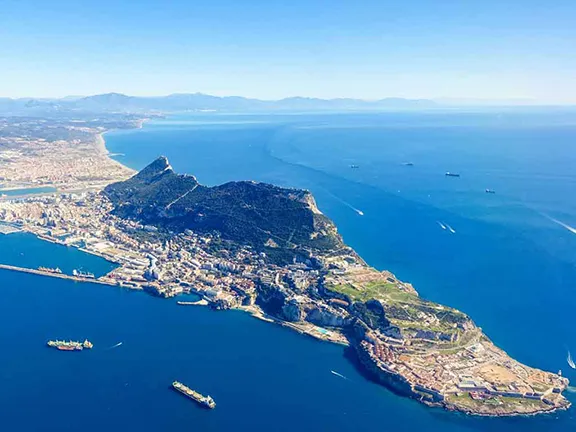 1: Defending Gibraltar in WWII
1: Defending Gibraltar in WWII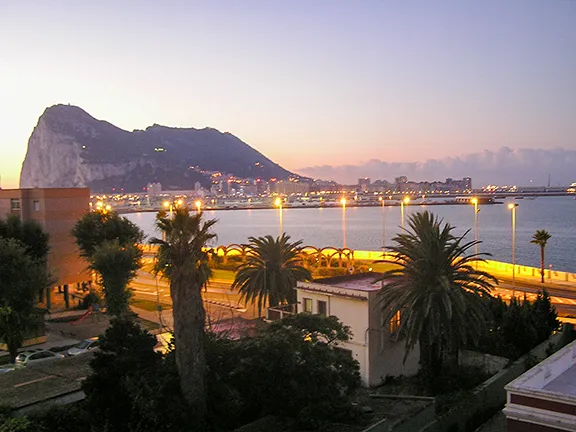 2: Operation Felix - Hitler's Plan to Capture Gibraltar
2: Operation Felix - Hitler's Plan to Capture Gibraltar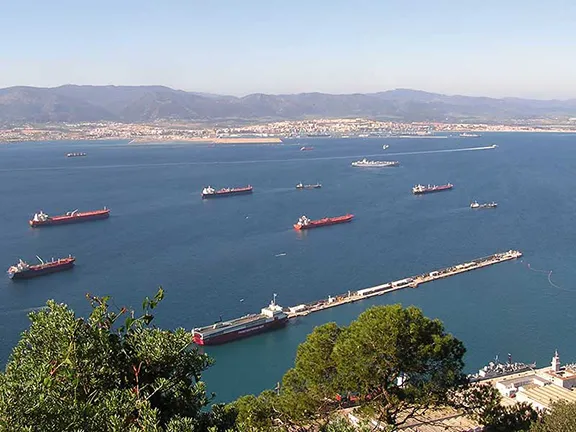 3: Operation Tracer - the Stay Behind Chamber
3: Operation Tracer - the Stay Behind Chamber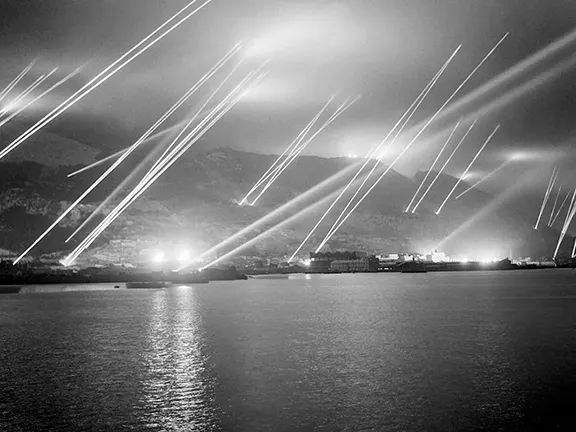 4: The WW II Evacuation of Gibraltar
4: The WW II Evacuation of Gibraltar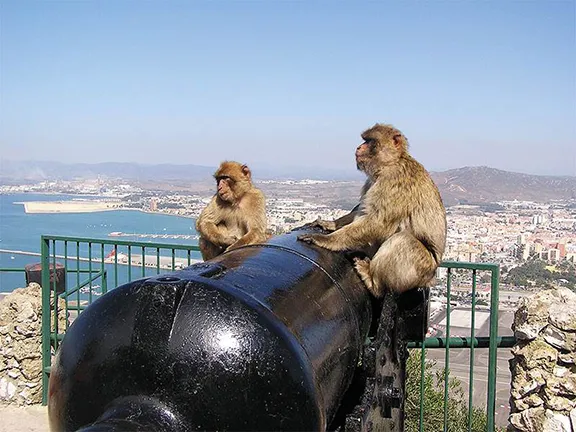 5: Gateway to Freedom for Escapers and Evaders
5: Gateway to Freedom for Escapers and Evaders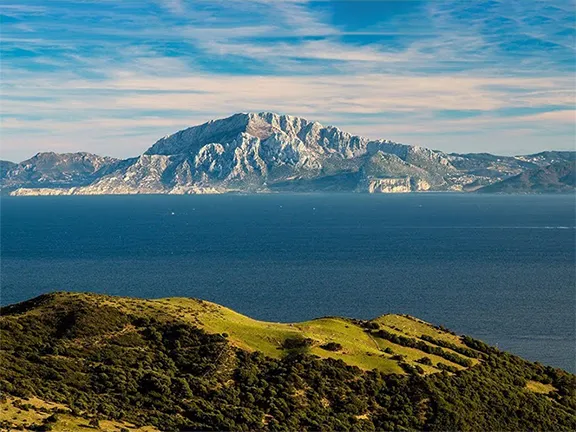 6: Gibraltar's Secret Flotilla during WW II
6: Gibraltar's Secret Flotilla during WW II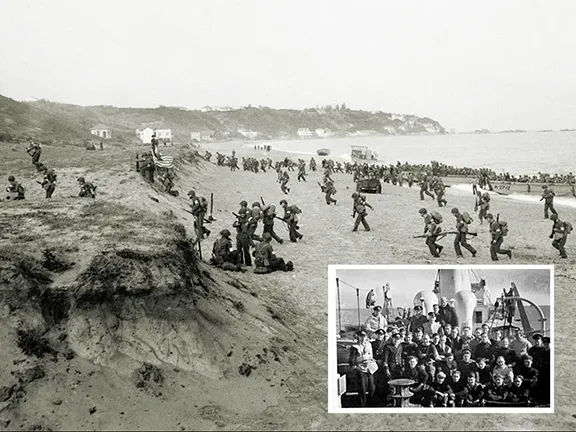 8: Letter from the Front - Personal Recollections
8: Letter from the Front - Personal Recollections 9: Operation Relator - SOE create mayhem in Gib
9: Operation Relator - SOE create mayhem in Gib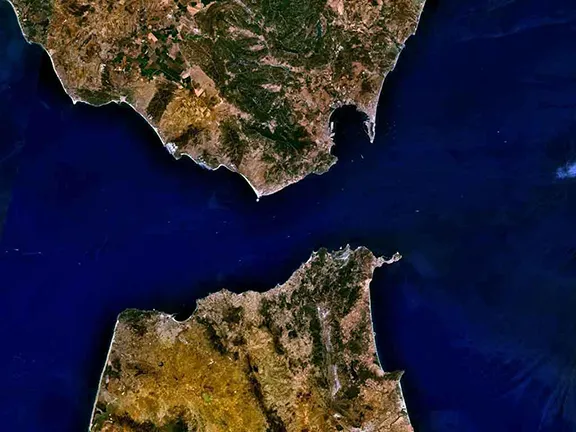 10: Operation Ursa Major - Prelude
10: Operation Ursa Major - Prelude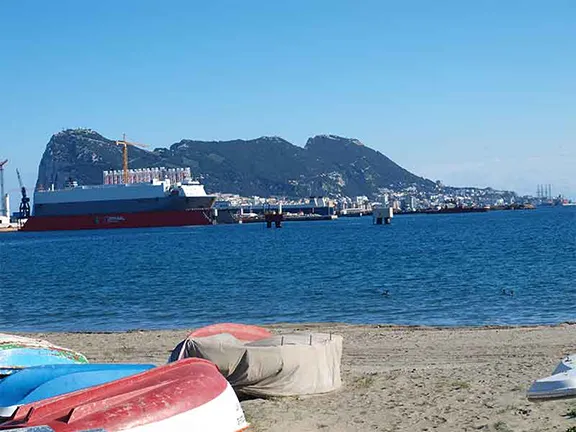 11: Operation Ursa Major - The Olterra
11: Operation Ursa Major - The Olterra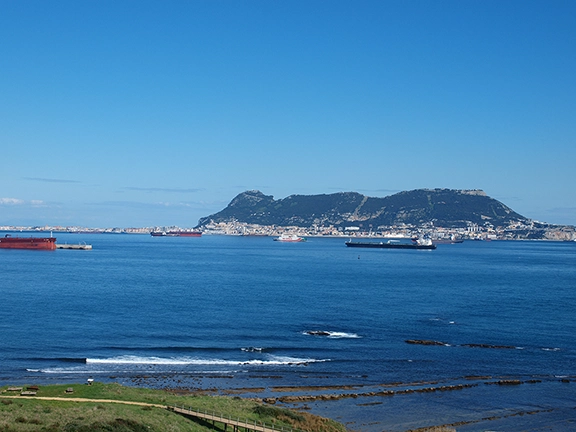 12: Operation Ursa Major - Execution
12: Operation Ursa Major - Execution 13: Operation Falaise - Zap a Nazi Spy Nest
13: Operation Falaise - Zap a Nazi Spy Nest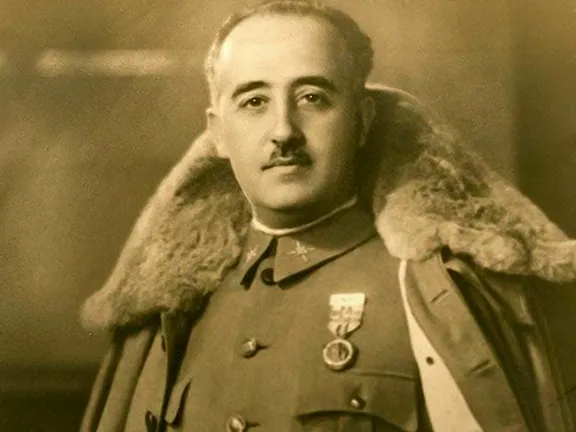 14: UK Policy towards Spain - Spanish Civil War
14: UK Policy towards Spain - Spanish Civil War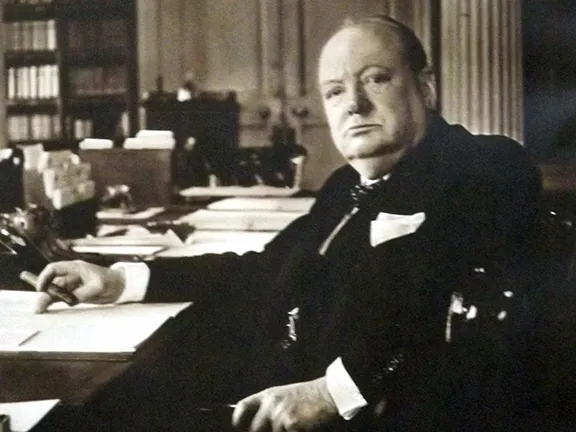 15: UK Policy towards Spain - 1940-1942
15: UK Policy towards Spain - 1940-1942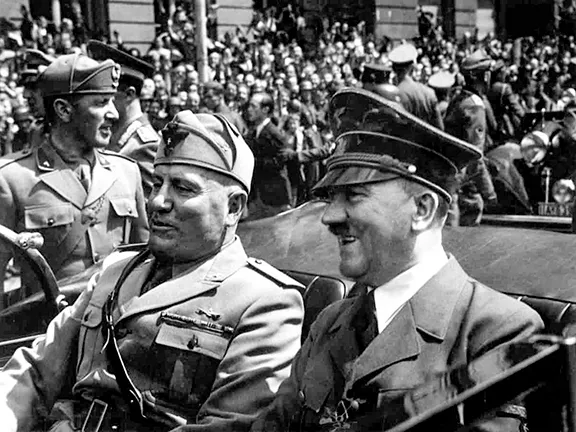 16: UK Policy towards Spain 1942 - 1945
16: UK Policy towards Spain 1942 - 1945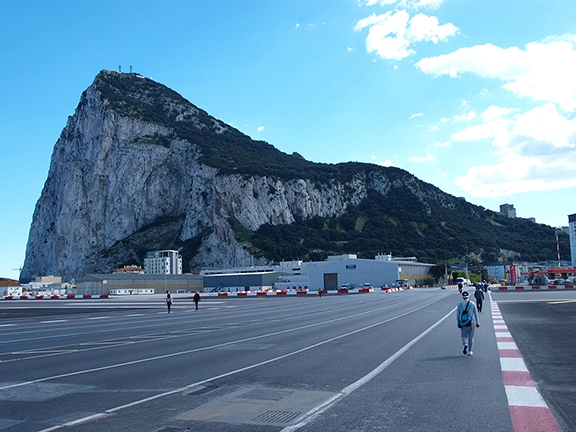 17: Abwehr Operations - Gibraltar WWII
17: Abwehr Operations - Gibraltar WWII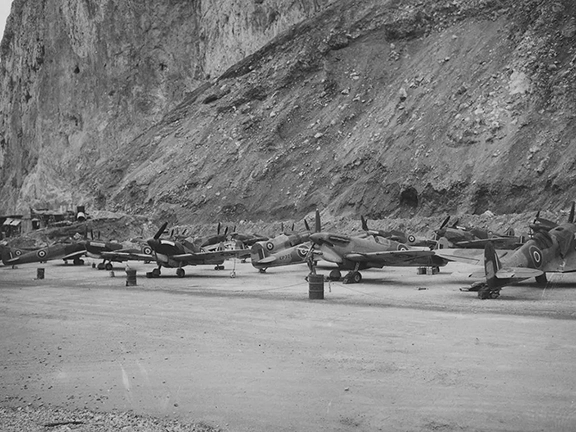 18: Counter Espionage - Gibraltar WWII
18: Counter Espionage - Gibraltar WWII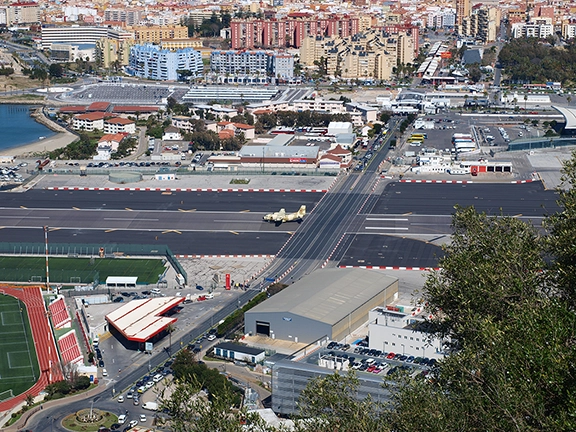 19: Operation Algeciras - 1982
19: Operation Algeciras - 1982